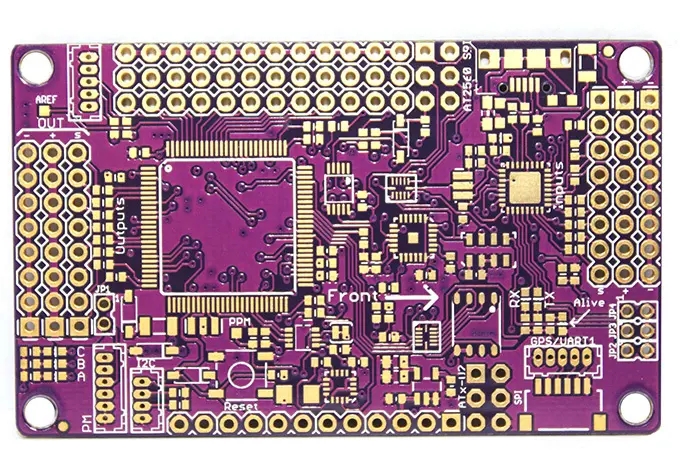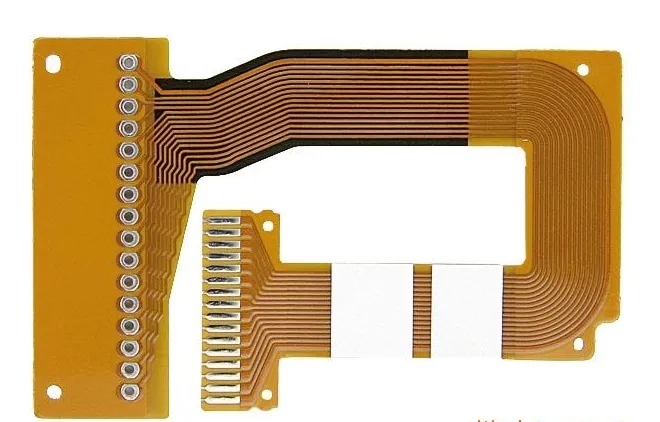
High speed PCB design grounding classification and electronic components
PCB manufacturers, PCB designers and PCBA manufacturers explain the grounding classification of high-speed PCB design and electronic components
With the development of electronic technology, the functions of electronic products are becoming more and more powerful. PCB design plays an important role in the design of electronic products, because the good or bad PCB design will directly affect the realization of product functions.
In the design of electronic products, it is not difficult to design a PCB circuit to realize its functions, but the difficulty is that it is not affected by various influences (such as temperature and humidity changes, air pressure changes, mechanical impact, corrosion effects, etc.). In order to maintain normal and stable work continuously, we will take various design means or manufacturing process measures to eliminate or reduce these impacts. Everyone knows that grounding design is the basis of system design, and good grounding is the premise of safe and stable operation of a system. So Xiao Bian will talk with you today about grounding methods in high-speed PCB design.
PCB grounding design:
The broad sense of grounding includes two meanings, namely, grounding to the real ground and grounding to the virtual ground. Grounding site refers to the connection with the earth; Virtual grounding refers to connection with potential reference point. When this reference point is electrically isolated from the ground, it is called floating grounding connection. Grounding has two purposes: one is to ensure the stable and reliable operation of the control system and prevent interference caused by the ground loop, which is often called working grounding; The other is to prevent operators from being exposed to electric shock due to insulation damage or falling of equipment and ensure the safety of equipment, which is called protective grounding.
Selection principle of grounding:
For a given equipment or system, when the maximum frequency (corresponding wavelength) concerned is input, when the length of the transmission line L>input, it is considered as a high-frequency circuit, otherwise, it is considered as a low-frequency circuit.
(1) Single point grounding is recommended for low-frequency circuit (<1MHZ);
(2) Multi point grounding is recommended for high-frequency circuit (>10MHZ);
(3) High and low frequency hybrid circuit, hybrid grounding, applicable working frequency range is generally 500kHz - 30MHz;

PCB grounding mode:
Single point grounding: the ground wire of all circuits is connected to the same point on the ground plane, which is divided into series single point grounding and parallel single point grounding.
Single point grounding refers to that in the whole system, only one physical point is defined as the grounding reference point, and all other points that need to be grounded are connected to this point.
Single point grounding is applicable to circuits with low frequency (less than 1MHZ). If the operating frequency of the system is so high that the operating wavelength is comparable to the length of the system grounding lead, the single point grounding mode is problematic. When the length of the ground wire is close to 1/4 wavelength, it is like a transmission line with short circuit at the terminal. The current and voltage of the ground wire are distributed as standing waves, and the ground wire becomes a radiation antenna, which cannot play the role of "ground".
In order to reduce the grounding impedance and avoid radiation, the length of the ground wire should be less than 1/20 wavelength. In the treatment of power circuit, single point grounding can generally be considered. For a large number of digital circuit PCBs, because they contain rich high-order harmonics, it is generally not recommended to use single point grounding.
Multipoint grounding
2. Multipoint grounding: the ground wires of all circuits are grounded nearby, and the ground wires are short enough for high-frequency grounding.
Multipoint grounding refers to that each grounding point in the equipment is directly connected to the nearest grounding plane to minimize the length of grounding lead.
The multipoint grounding circuit has a simple structure, and the possible high-frequency standing wave phenomenon on the grounding wire is significantly reduced. It is suitable for the occasions with high working frequency (>10MHZ). However, multi-point grounding may lead to the formation of many grounding loops inside the equipment, thus reducing the resistance of the equipment to external electromagnetic fields. In case of multipoint grounding, note
The problem of Italian terrestrial loop, especially when networking between different modules and devices. Electromagnetic interference caused by ground circuit:
The ideal ground wire should be a physical entity with zero potential and zero impedance. However, the actual ground wire itself has both resistance and reactance components. When a current passes through the ground wire, it will produce a voltage drop. The ground wire will form a loop with other connections (signal, power line, etc.). When the variable electromagnetic field is coupled to the loop, it will be in the ground loop
The induced electromotive force is generated in the and is coupled to the load by the ground loop, which constitutes a potential EMI threat.
3. Mixed grounding: use single point grounding and multi-point grounding together.
Generally, all modules will use two kinds of grounding methods comprehensively, and use the mixed grounding method to complete the connection between the circuit ground wire and the ground plane.
If the whole plane is not selected as the common ground wire, for example, when the module itself has two ground wires, the ground plane needs to be divided, which often interacts with the power plane. Pay attention to the following principles:
(1) Align all planes to avoid overlap between irrelevant power planes and ground planes, otherwise, all ground planes will be divided into invalid planes and interfere with each other;
(2) In the case of high frequency, the parasitic capacitance between layers through the circuit board will produce coupling;
(3) The signal lines between ground planes (such as digital ground plane and analog ground plane) are connected by ground bridges, and the nearest return path is configured through the nearest through-hole.
(4) Avoid unnecessary radiation caused by high-frequency routing such as time clock line near the isolated ground.
(5) The ring area formed by the signal line and its loop shall be as small as possible, which is also called the loop minimum rule; The smaller the ring area is, the less the external radiation is, and the smaller the external interference is received. In ground plane segmentation and signal routing, the distribution of ground plane and important signal routing shall be considered to prevent problems caused by ground plane slotting.
4. Floating floor:
Floating ground refers to a grounding mode in which the equipment ground wire system is electrically isolated from the ground.
Because of some weaknesses of floating ground itself, it is not suitable for general large system, and its grounding mode is rarely used PCB manufacturers, PCB designers and PCBA manufacturers will explain the grounding classification of high-speed PCB design and electronic components







